Dynamos have become increasingly popular in recent years, particularly as interest in bikepacking and ultra-endurance cycling has increased, thanks to the ability to power lights and charge other devices on the go.
A dynamo is a device typically located in the hub of a bike's wheel that converts the energy generated by the wheel spinning to electrical energy. That power is then used to run front and rear dynamo lights on the bike, providing always-on illumination without the need to charge lights.
In this guide we’ll explain:
What are bottle and hub dynamos, and do they work?
A dynamo hub produces electricity by passing powerful permanent magnets, usually embedded into the shell of the hub (the rotor), over a coil of wire (the stator).
This process is called electromagnetic induction and is, in simple terms, the opposite of how an electric motor works.
Most dynamo hubs produce six volts at a typical maximum power of three watts. The power produced by a dynamo will increase as your speed increases.
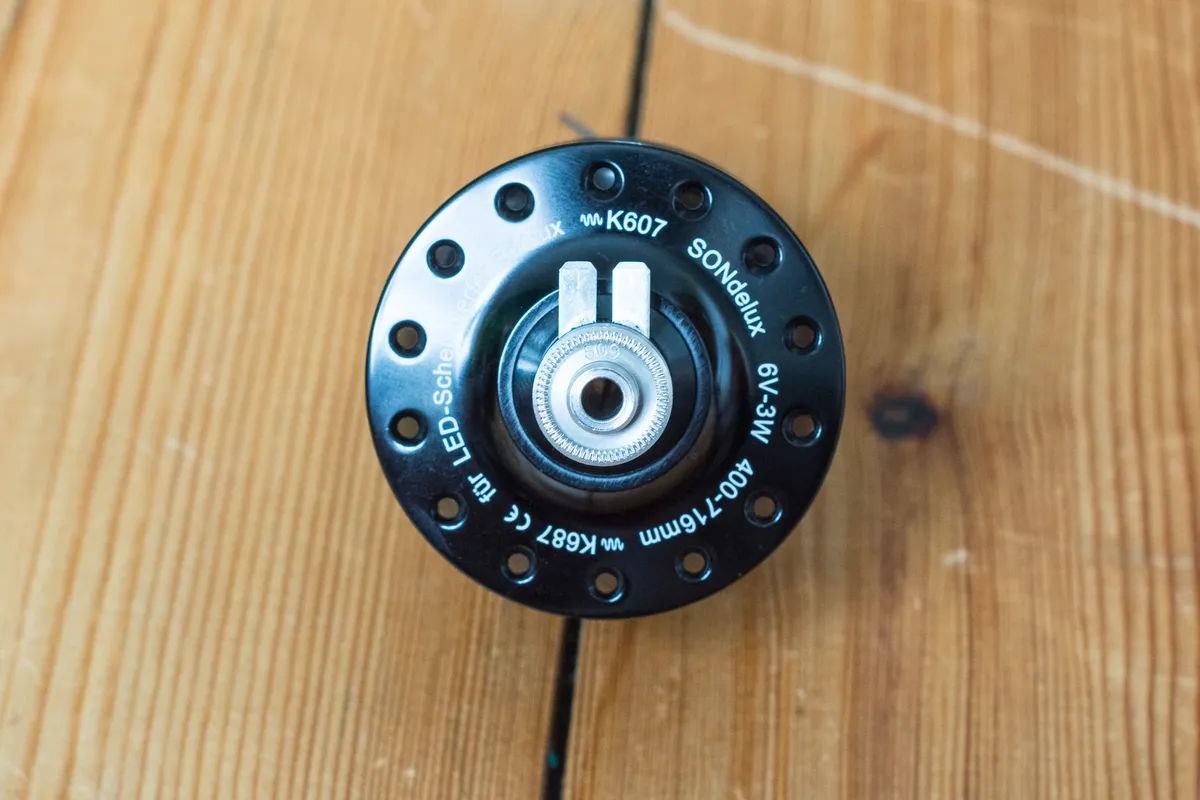
The electrical connection on the hub that connects to your lights usually takes the form of a two-prong plug on the driveside of the hub, but connectorless systems that are integrated into a bike’s fork do exist.
Most dynamo hubs are located on front hubs, though a handful integrates the dynamo into the rear hub.
Dynamo hubs are available to fit most bikes, including rim and disc brake variants, as well as thru-axle and quick-release options.

In addition, dynamo hubs are also available to suit different wheel sizes. This is because smaller wheels spin faster compared to larger wheels at any given speed.
As such, when riding at high speeds, using a dynamo hub designed for 700c wheels on a 20in folding bike could increase the risk of damaging your light from overvoltage.
A number of wheel manufacturers, including Hunt, Halo and Prime, offer complete wheels with dynamo hubs, but many riders choose to build their own wheels around their preferred hub.
What about bottle dynamos?

Bottle dynamos (also known as sidewall dynamos) work in a similar way to a hub dynamo. However, instead of being embedded into a hub, a bottle-shaped generator that's bolted onto the seatstays runs a small wheel on the outside edge of a bicycle’s tyre or rim to generate power.
These have the advantage of being easier to retrofit to a bike and are typically cheaper than a hub dynamo. They can also be fully disengaged when not required.
However, they can slip in wet or muddy conditions and are usually noisier when running.
Dynamo or alternator?

For the pedants out there, most dynamos are technically single-phase alternators (a magneto if you want to be really specific) that produce alternating current (AC).
The key difference is that a dynamo in the strictest sense of the word produces direct current (DC). As such, it’s technically more accurate to refer to a dynamo hub as a generator hub.
So where did the name ‘dynamo hub’ come from, and why has it stuck?
As with a Xerox, Velcro or an Escalator, Sturmey Archer is the victim of a form of genericization.
Sturmey Archer's widely-sold Dynohub, which was originally released in the 1930s, became synonymous with generator hubs and ‘dynamo’ has become everyday parlance in the cycling world (even if the name is technically incorrect).
What is a dynamo light?
While a dynamo typically refers to the component generating power, it’s also often (albeit incorrectly) used to describe a light powered by a dynamo hub.
Dynamo headlights
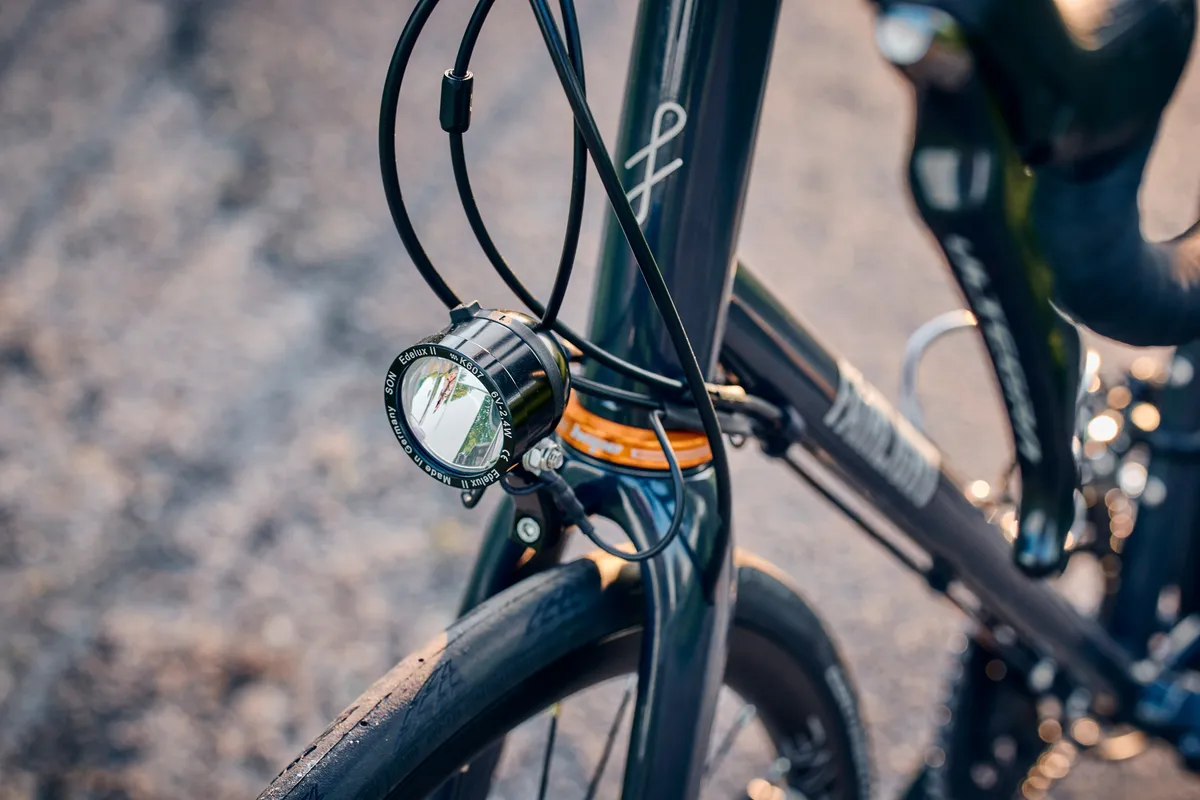
A dynamo bike light relies on the power produced by a dynamo to work.
Apart from a small battery or capacitor that keeps the light illuminated for a short time after you stop (known as a standlight), a dynamo headlight requires your wheels to be spinning to provide illumination.
To be absolutely clear, almost all dynamo lights cannot be powered by a battery. Some specialist bikepacking lights, such as the Llum Dynamo Light, can be powered by an external battery, but these are in the minority.
Conversely, most battery-powered headlights cannot be run directly from a dynamo (some lights, such as the Light & Motion Rando 500 allow you to slowly charge the internal battery via a dynamo as you ride).

Modern LED-based dynamo headlights are fairly complex.
To start, they have to convert the AC power produced by the dynamo into DC (this circuit is known as a rectifier). They also typically include over-voltage protection and logic circuit that detect whether the standlight needs to be activated.
Older incandescent dynamo lights could be plugged straight into a dynamo hub because they work with either AC or DC current, so were much simpler. However, these aren’t nearly as bright or reliable as LED lights and are now only seen on the cheapest dynamo headlights.
Another key difference compared to the majority of the best bike lights powered by batteries is that most dynamo headlights are StVZO-compliant.
StVZO is a German standard that dictates how lights must be designed in order to comply.

The biggest difference compared to a non-compliant light is the use of a specially-shaped cut-off beam. This directs as much light onto the road or trail as possible without dazzling drivers.
Many road riders prefer the shape of an StVZO beam – those clever optics throw your precious lumens where you want them without dazzling other road users.
However, they don’t provide the type of wide beam shape that’s more useful for riding off-road.
Dynamo lights are most popular in Europe and many key manufacturers (SON, B&M, Supernova and so on) are based in Germany, which is why most comply with this legislation.
Check out our full explainer on StVZO bike lights for more info.
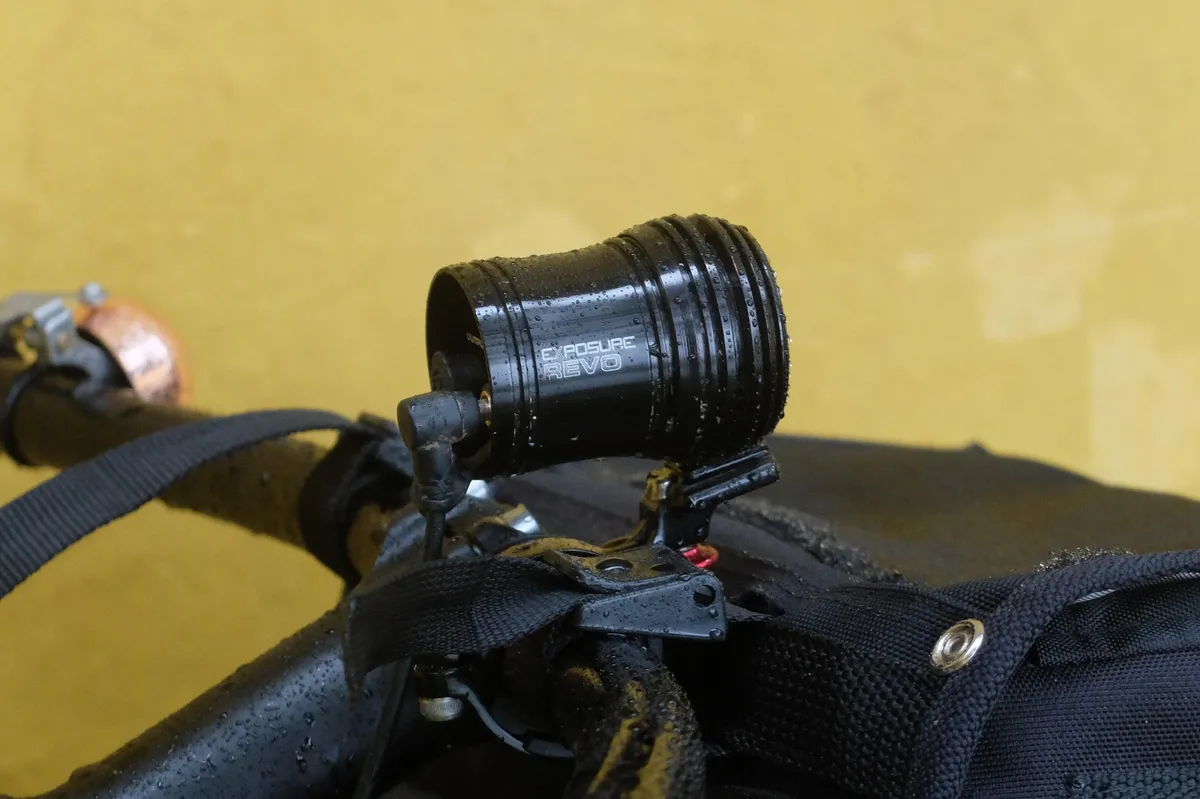
Exceptions do, of course, exist. The KLite BikePacker Ultra V2, Exposure Revo and Sinewave Beacon all use standard round beams, which is typically better for off-road riding. These options are all very popular for bikepacking.
Dynamo rear lights

Dynamo rear lights typically attach to cables that run along the length of the bike and plug into the back of a dynamo headlight.
These basic lights are little more than an LED inside a suitable casing with a long cable soldered on. These rely on the standlight circuit within the headlight to remain illuminated when you stop.
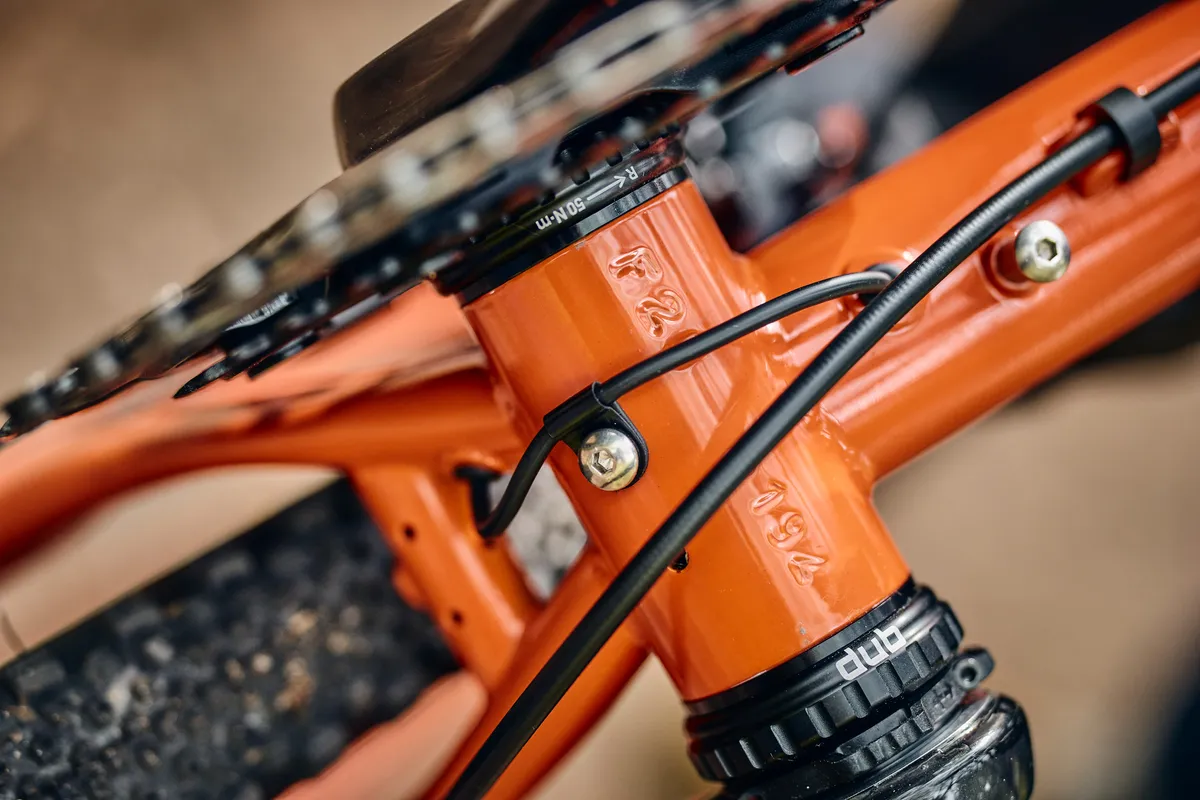
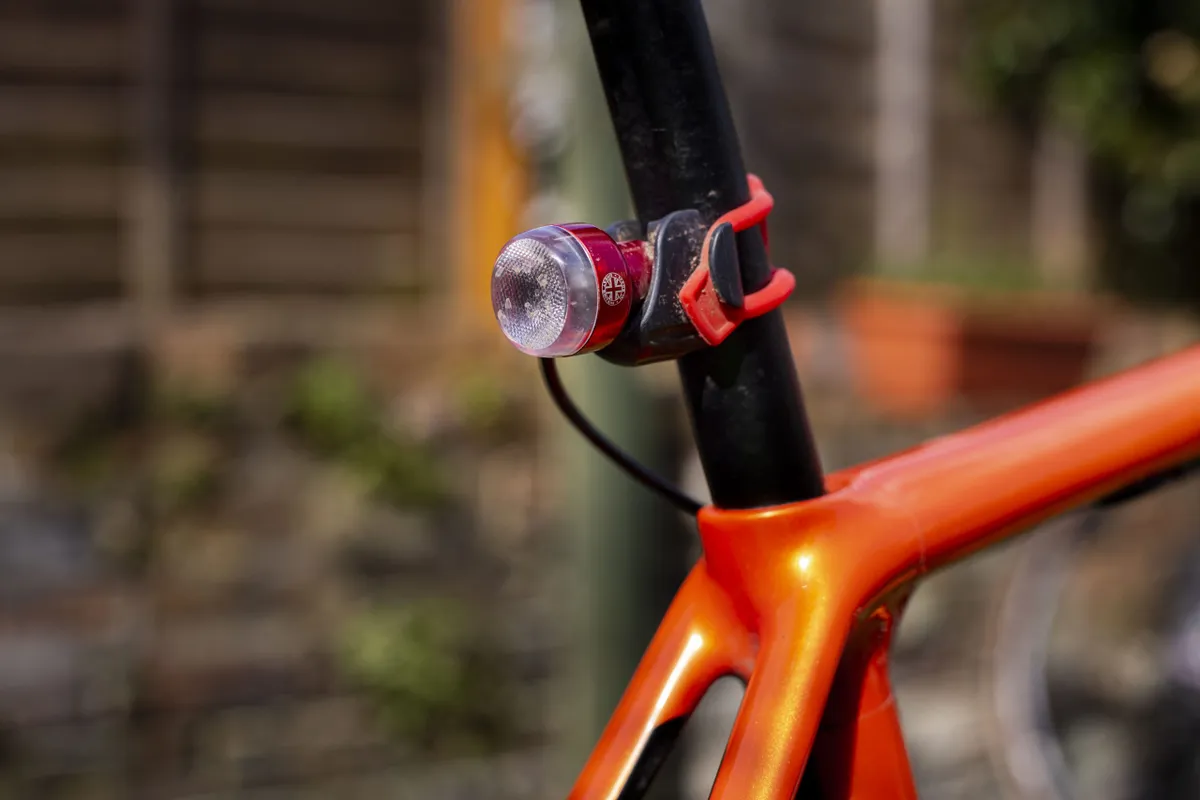
Most rear lights now use a coaxial or twin-core cable to connect to the headlight, but older lights sometimes used the frame of the bike as the ground for the circuit.
How much drag does a dynamo light system add?
Any dynamo system will introduce drag, but the difference is likely to be imperceptible for most people riding at normal speeds.
Lab testing by Fahrrad Zukunft in 2014 showed even the least efficient dynamos only added roughly 3 watts of drag at normal riding speeds (20km/h) with the light switched off.
With the light switched on, you can expect losses of around 6 watts at the same speed. If you kick things up to 30km/h that figure rises to around 8 watts for the least efficient dynamos.
In simple terms, drag increases when the light is turned on because the electricity produced by the generator, which in turn powers your lights, creates its own magnetic field. When this current passes through the stator, it works against the magnets in the rotor, increasing drag.
This drag will increase as more power is drawn – running a 1.5-watt instead of a 3-watt headlight would yield less drag (but all else being equal, you would have less light).
In contrast, the most efficient dynamo hub (the SONDelux in this test) will only add around 6.5 watts at 30km/h with the light switched on.
To put that into context, that’s roughly the difference between riding with a dirty and clean chain, according to Jason Smith of Friction Facts.
If you want to work out what that would add up to in terms of changes to your overall speed or riding time, you can run the numbers through the ever-helpful Bike Calculator, but it’s likely to be a very small amount.
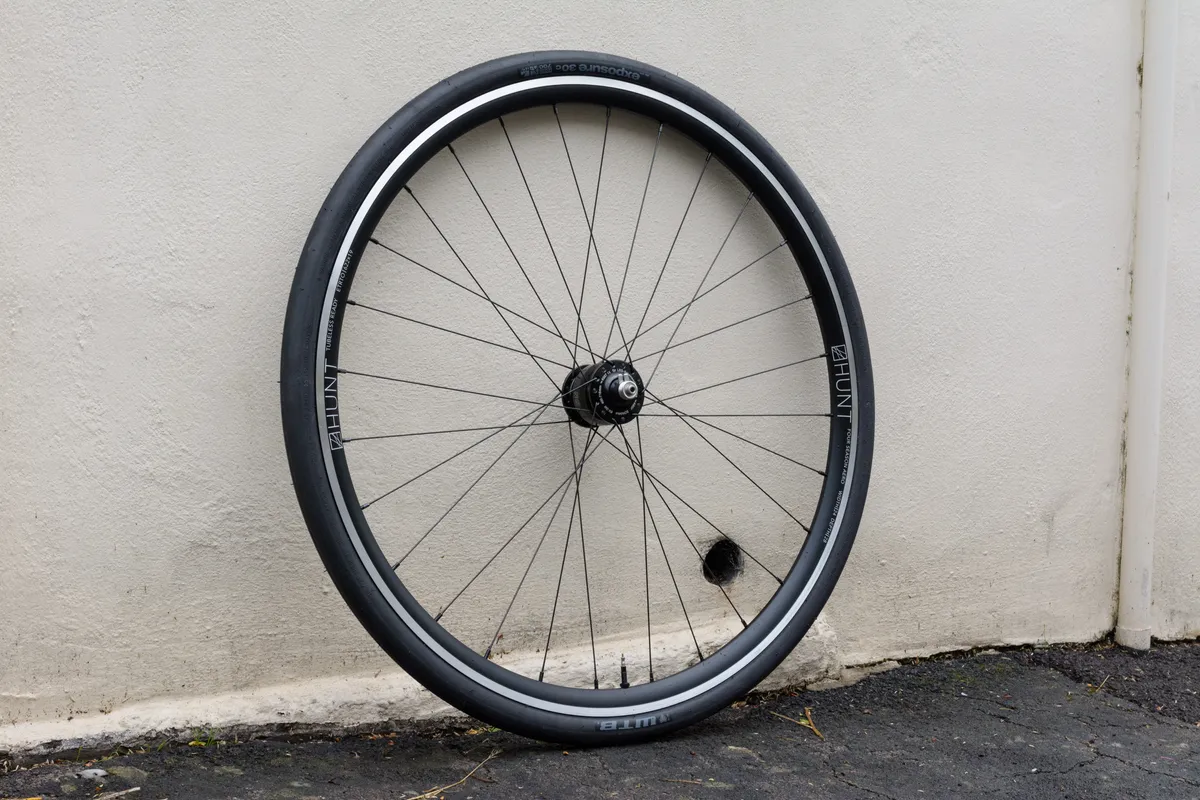
Drag aside, our personal testing has shown that you can 'feel' some dynamo setups when riding.
A radially-laced* Shutter Precision dynamo hub has a distinct rumbly feel through the bar when riding at higher speeds.
Britta Zimmerman of SON explained a radially-laced dynamo wheel can amplify the noise of a dynamo compared to a cross-laced wheel. The points where the spokes meet in a cross-laced wheel ‘interrupt’ the vibrations produced by a dynamo hub. As an analogy, imagine plucking a guitar string, then plucking it again while grasping the middle of the string – the vibrations will be greatly reduced.
Likewise, the Velogical bottle dynamo transmits a very light buzz through the bike that’s noticeable if you really pay attention to it. The effect is more pronounced with lower-quality bottle dynamos.
On the other hand, the SONDelux wheel is essentially buzz-free unless descending at around 45km/h , at which point there’s a light rumble through the bar.
Whether or not this will be a problem for you really depends on how sensitive you are to such things but, in our experience, it’s quite easy to tune out.
Is it legal to ride with dynamo lights?

Almost certainly yes, but it’s always good to check the exact rules in your country when it comes to the requirements of a lighting setup.
In Germany, your lights will have to be StVZO-compliant.
Dynamos are legal to use in the UK, but there are quite prescriptive general rules for bike light laws in the UK, which are worth reading.
In general, though, provided you have a front and rear light and your dynamo setup includes a standlight to keep the light illuminated when you stop, you should be fine.
Can you charge other devices with a dynamo?

You can use a dynamo to charge your phone or other electronic devices, but you will require a rectifier to turn the dynamo’s AC current into a semiconductor-friendly DC supply.
Some dynamo headlights, such as the Sinewave Beacon, B&M Lumotec IQ2 Luxos and AXA Luxx70 Plus, include a USB output, but these are in the minority.
Most riders who want to charge devices on the go opt for dedicated converters, such as the Sinewave Revolution, Cinq Plug5 or Kemo M172N. If you’re so inclined, it’s also fairly easy to make your own DIY USB dynamo charger.
Regardless of the setup you opt for, if you intend to charge a modern smartphone, charging by dynamo is best thought of as a trickle charging system, with maximum power topping out at around 4 watts.
For comparison, a ‘slow’ iPhone charger has a maximum power of 5 watts, with fast chargers closer to 18 watts.
Most converters should have enough to power a GPS bike computer on the go, though.
What are the pros and cons of dynamo setups?
Dynamo light pros
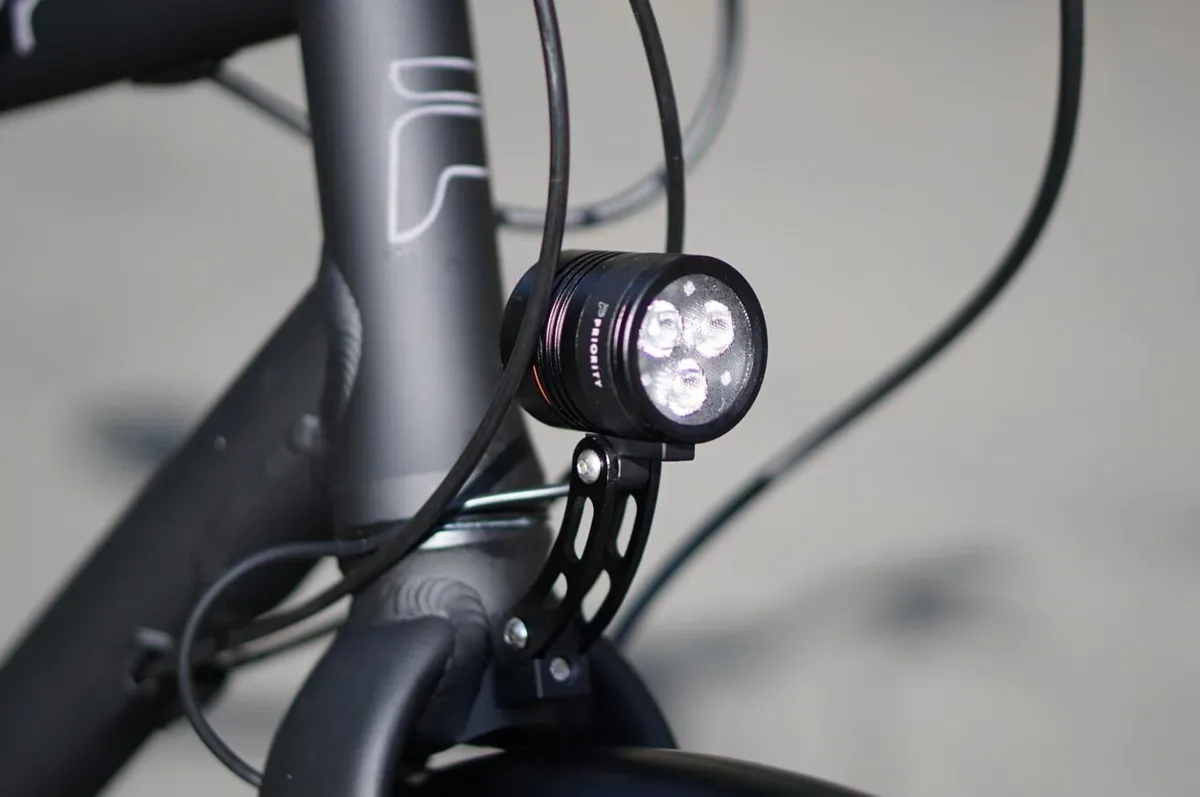
Whether or not a dynamo light system is right for you depends on your preferred type of riding, but many riders could benefit from investing in a dynamo light system, particularly if you regularly spend time cycling at night.
For regular bike commuters, it’s a no-brainer for cycling to work and urban riding. Being able to jump on your bike at any time without having to think about charging lights is a significant advantage.
As dynamo lights are usually bolted to your bike, they’re also much harder to steal if you regularly leave your bike locked up. If you are shopping for a dedicated commuting bike, a dynamo light system is well worth considering.
For bikepackers and cycle tourists, not having to worry about where to charge battery lights is important on longer trips. Being able to charge devices on the go is also very handy.
For committed year-round road cyclists or those that like to ride longer events, dynamo lights add the practical and mental security of infinite runtime, so you can stay out for as long as you like.
Dynamo light cons
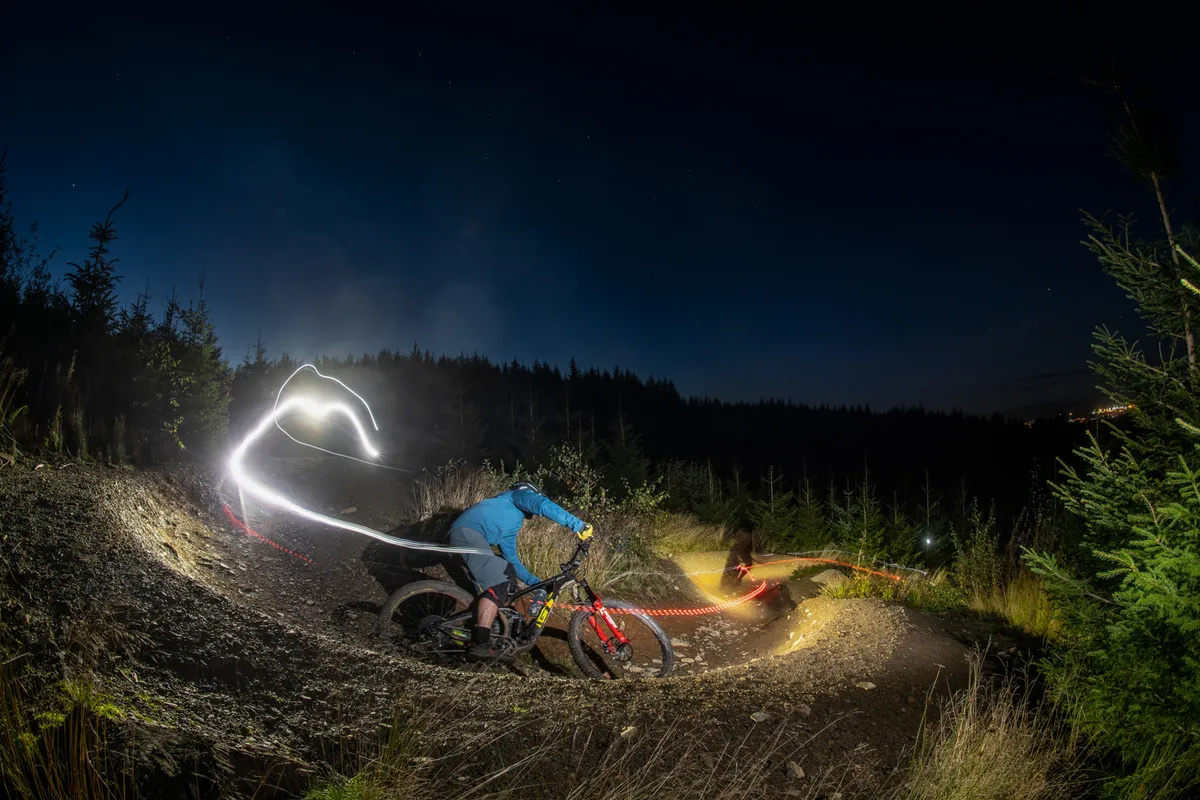
On the other hand, for the weight-conscious or those who are worried about saving every last watt, a dynamo light system is less likely to appeal. If you only care about improving daytime visibility or intend to cycle at night for short periods, road bike lights will suffice.
While a dynamo setup suitable for commuting can be relatively cheap, a high-performance package suitable for riding on unlit roads is expensive. The market is dominated by small manufacturers producing relatively small quantities and you will almost certainly have to factor in building a new front wheel, pushing up costs further.
Finally, if you ride off-road, the cut-off beam produced by most dynamo lights isn’t the best for mountain bike night riding. Even if you buy a dynamo light with a regular round beam, you may find the light flickers at lower speeds, which is incredibly distracting if you’re riding on technical terrain.
What are the best dynamo hubs and lights?
We have tested a number of dynamo hubs and lights from key manufacturers for extended periods.
This roundup is by no means exhaustive and our testing is limited to assessing reliability, but this should hopefully be a useful guide if you’re thinking about investing in a dynamo lighting system.
It’s important to stress there is no right solution for every circumstance – weighing up reliability, repairability, efficiency and cost are all important.
Best dynamo hubs and generators
Schmidt SONDelux
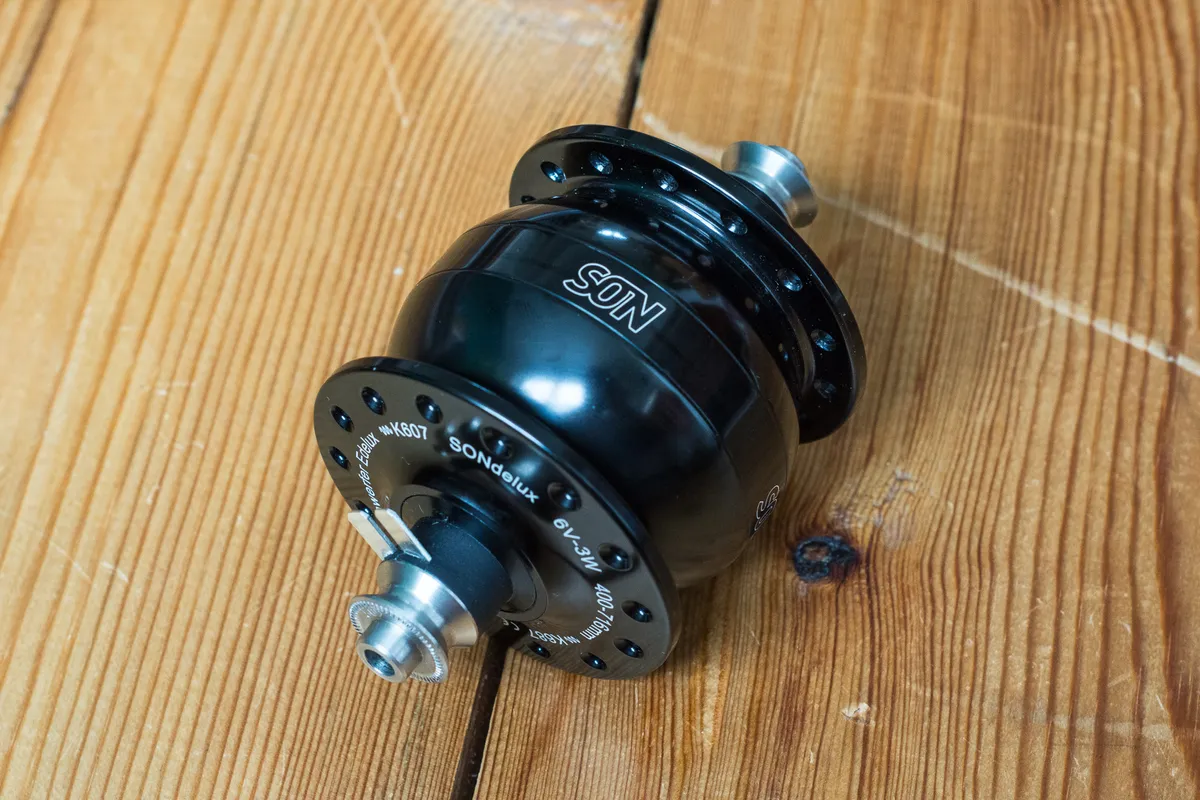
- Pros: Very efficient; reliable; lots of options
- Cons: Expensive; albeit infrequent, servicing must be carried out by SON
The SONDelux is the best dynamo hub we have tested. It’s so smooth as to be imperceptible in use at anything but the highest speeds, and still gives decent power at lower riding speeds.
SON hubs are also widely considered to be the most reliable dynamo hubs out there, though they do have to be sent back to SON or a local distributor to be serviced.
This quality also comes at a considerable premium. It is one of the most expensive dynamo hubs on the market, at £199.99 / $296.
If you want the most power possible, the SON 28 is likely a better choice because it’s optimised to give the most output possible from slower riding speeds.
In any case, if you’re absolutely convinced you want to commit to a dynamo lighting setup, we wouldn’t hesitate to recommend any of SON’s hubs.
Shutter Precision SV-9
- Pros: Affordable; relatively efficient
- Cons: Inconsistent reliability; rumbly at high speeds
If your budget can’t quite stretch to a SON hub, we would most likely opt for one of Shutter Precision’s (usually shortened to SP) many hubs.
SP hubs aren’t quite as smooth as SON hubs, but they come in a lot cheaper, starting at around £110 RRP.
We’ve tested a number of SP hubs and had mixed experiences – our first SP SV-9 hub developed a lot of play shortly into the testing period. After it was repaired, we had the opposite problem and the hub seized after a while.
In both cases, ISON (which co-distributes SP hubs in the UK) repaired the hub in short order, and everyday customers should expect the same service.
However, our second (this time new) hub has since been completely trouble-free for around a year’s worth of riding, and there’s no sign of that changing any time soon.
Shimano dynamo hubs
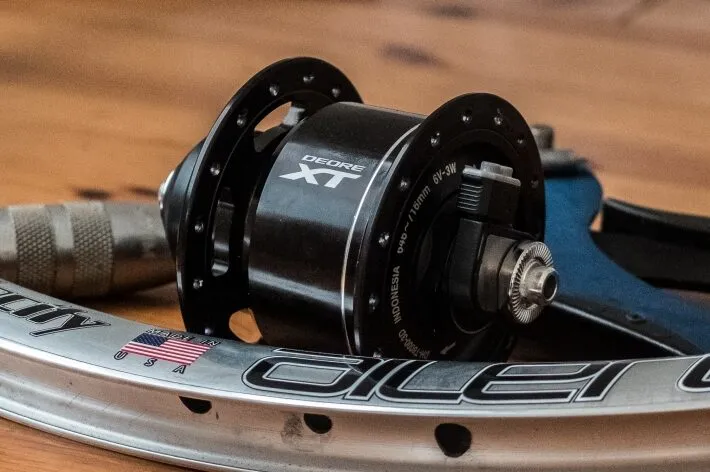
- Pros: Very affordable; lots of spec options; high power at low speeds
- Cons: Heavy; limited servicing options
If you haven’t got a lot of cash to spend, don’t care about weight and want the option to service some of the parts yourself, then we’d recommend choosing one of Shimano’s many dynamo hub options.
Though the product line has shrunk in recent years, Shimano still offers affordable disc and rim brake variants of its dynamo hubs, all the way from entry-level non-series components up to a Deore XT hub.
It’s not possible to fully disassemble these hubs, but you can service the non-driveside bearings and replace the entire generator and driveside bearing assembly without unlacing the hub from the wheel.
Velogical Sport bottle dynamo
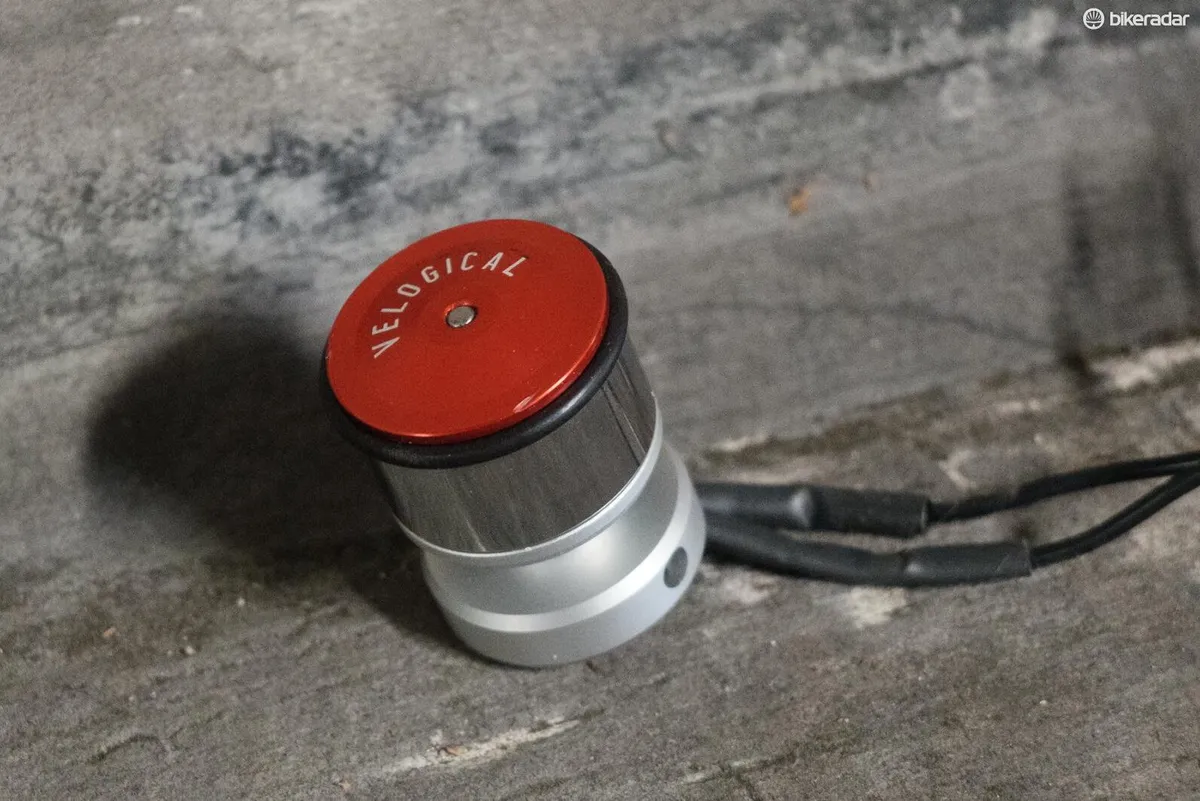
- Pros: Adaptable; lightweight
- Cons: Fiddly to setup; less svelte than a dynamo hub
Finally, if you have lots of bikes, use a mix of rim and disc brakes and don’t want to invest in two dynamo wheels, you may be well served by a dynamo from Velogical. This will also give you the option to fully disengage your dynamo.
Setup is a bit fiddly the first time around, but the design and construction of these little units are fantastic.
Best dynamo lights
SON Edelux II
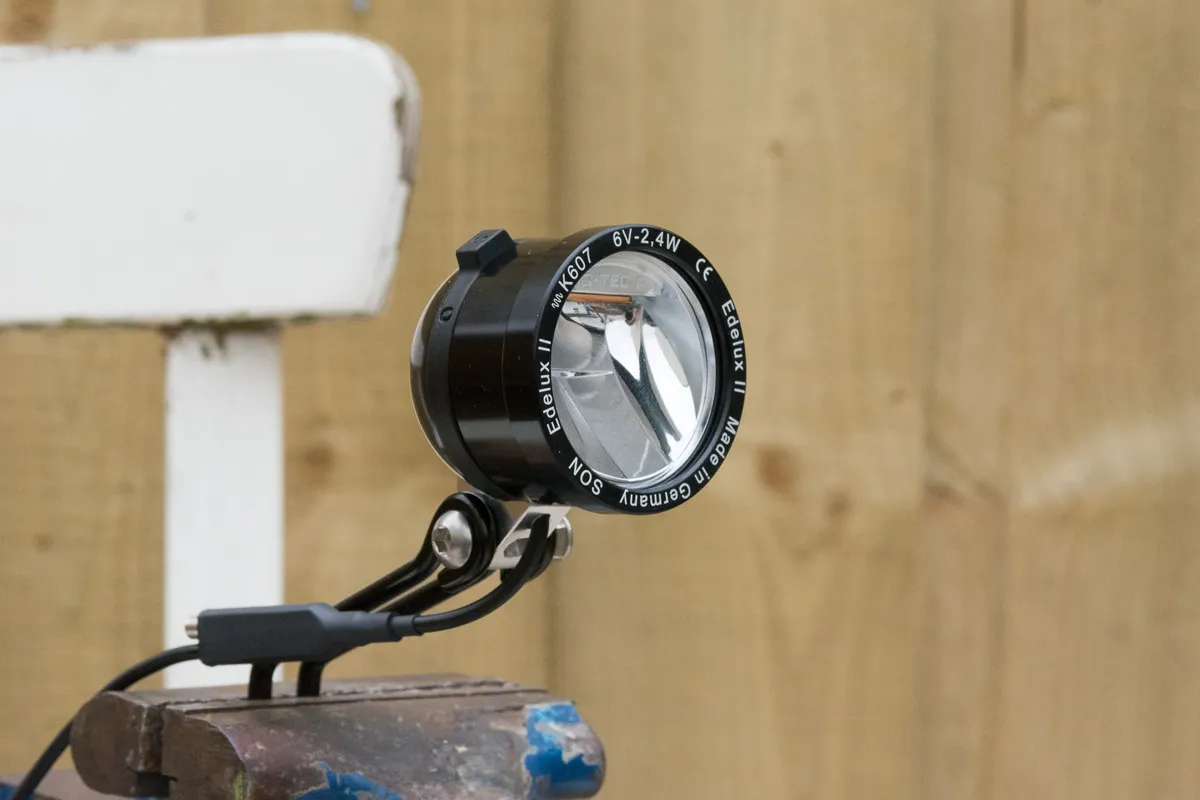
- Pros: Excellent build quality; wonderful optics
- Cons: Expensive
SON once again is our recommended pick. The build quality of the brand’s Edelux headlights is second-to-none and its shaped beam optics – licensed from Busch Müller – are perfect for road and gravel riding.
The light is available in vertical or upside-down mounting configurations and its standard 10mm mount means it can be fitted to pretty much anywhere on a bike, including the bar, crown of a fork or front racks. It even comes in some funky colours. What more could you ask for?
Busch Müller IQ-X

- Pros: Similar performance to SON's lights at a lower price
- Cons: Less premium build quality; susceptible to water ingress
The Busch Müller IQ-X uses similar optics to the SON Edelux but packages them into a more affordable and slightly less robust package.
The housing uses a mixture of alloy and plastic parts, which don’t feel quite as solid as the Edelux. This makes no difference in day-to-day use but is noticeable when you first set up the light.
We didn’t love the remnants of cables that were left behind when we ran the headlight without a rear light, but a small zip-tie and some shrink wrap put that issue to bed. We've also had issues with water-ingress on the light – be careful when washing or storing the bike upside down.
Exposure Revo

- Pros: Super powerful; excellent standlight
- Cons: No fork crown mounting option
The Exposure Revo is a beautifully made dynamo light that is perfect for unpaved adventures. Its standlight is particularly impressive, providing up to an hour of usable light, dropping down from 400 lumens progressively as it discharges. This makes it particularly good for bikepacking.
Its coaxial connectors are also super-easy to use and the output port can be used to charge devices or run a rear light. The light is also compatible with most of Exposure’s other accessories, but we wish the brand produced a fork crown mount.
